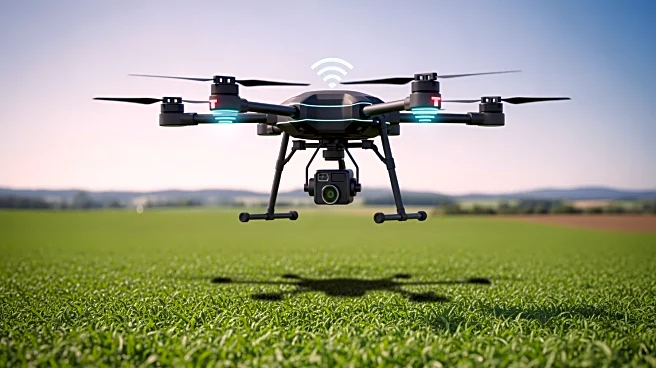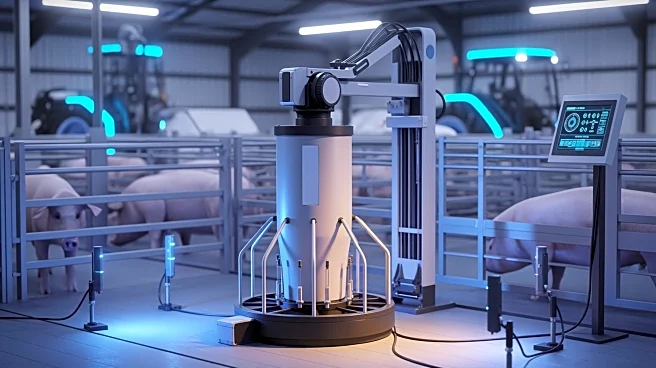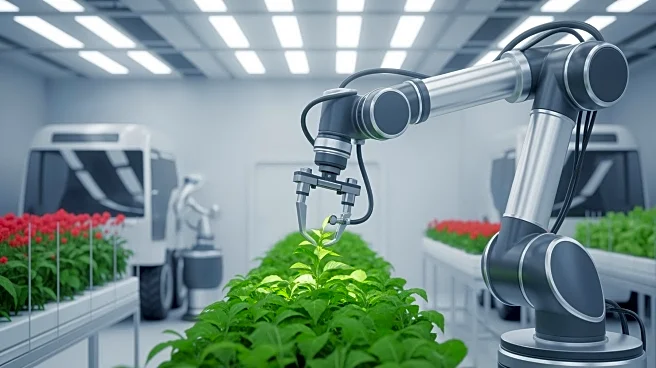What's Happening?
The agricultural sector is increasingly adopting drone technology for crop spraying, offering a more precise and efficient method of applying pesticides, herbicides, and fertilizers. These unmanned aerial vehicles (UAVs) are equipped with tanks and spraying mechanisms
that allow for even distribution of chemicals over fields. The market for crop spraying drones is projected to grow significantly, with estimates suggesting it could reach $10.86 billion by 2029. This growth is driven by the need for precision agriculture, labor shortages, and sustainability goals. Drones are programmed with GPS and mapping software to ensure accurate coverage, and they can adjust application rates in real-time based on sensor data. This technology not only reduces chemical use and environmental impact but also enhances worker safety by minimizing direct exposure to agricultural chemicals.
Why It's Important?
The use of drones in agriculture represents a significant shift towards more sustainable and efficient farming practices. By enabling targeted application of chemicals, drones help reduce waste and environmental runoff, addressing both economic and ecological concerns. This technology also alleviates labor challenges by reducing the need for manual spraying, which is particularly beneficial in regions facing workforce shortages. Furthermore, drones can operate in difficult terrains where traditional equipment may struggle, providing farmers with greater flexibility and control over their operations. As the agricultural industry continues to face pressure to increase productivity while minimizing environmental impact, drone technology offers a promising solution that aligns with these objectives.
What's Next?
The future of drone spraying in agriculture is likely to see further integration with smart farming systems and the Internet of Things (IoT). Advances in artificial intelligence and machine learning could enhance the adaptability and efficiency of drone operations, allowing for real-time optimization and anomaly detection. Additionally, improvements in battery technology and the development of swarm technology could expand the capabilities and coverage of drones. However, widespread adoption will depend on overcoming challenges such as regulatory compliance, training, and cost. Continued innovation and supportive policies will be crucial in maximizing the potential of drones in agriculture.
Beyond the Headlines
The adoption of drone technology in agriculture also raises important ethical and regulatory considerations. Ensuring compliance with aviation and agricultural regulations is essential to prevent misuse and ensure safety. Moreover, the shift towards automation in agriculture may have broader implications for rural employment and the skills required in the agricultural workforce. As drones become more prevalent, there will be a need for new training programs and support services to help farmers integrate this technology into their operations effectively.













